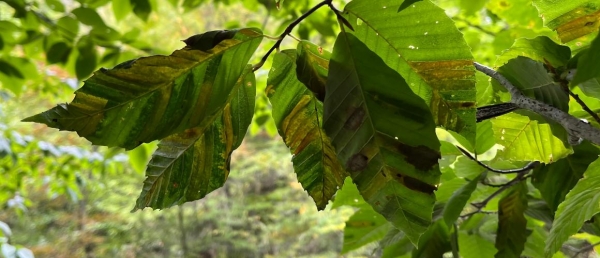Beech trees provide food for animals, timber for wood products, and sustenance for beech drop plants, but they are under threat from Beech Leaf Disease (BLD).
Beech trees provide food for animals, timber for wood products, and sustenance for beech drop plants, but they are under threat from Beech Leaf Disease (BLD). The disease, first documented in 2012 in the Midwest, is associated with the nematode Litylenchus crenatae mccannii and is spreading rapidly throughout the central and northeast regions of North America.
A team of scientists led by Craig Brodersen, professor of plant physiological ecology, and Leila Fletcher, postdoctoral associate, at the Yale School of the Environment has uncovered new insights on how the disease is impacting leaves at the cellular level and provided a novel mechanistic explanation for the decline of the trees post-infection.
Brodersen first became interested in the disease after noticing the infected trees during a walk in the woods with his children.
“It’s a beautiful tree and an important part of the landscape. I wanted to do something with the tools we have to contribute to a better understanding of what the disease is doing to the tree. In order to come up with a solution, you have to come at it from as many angles as possible,” he said.
Read more at: Yale School of the Environment
A leaf from a tree in West Rock Ridge State Park in New Haven shows symptoms of infection from Beech Leaf Disease. (Photo Credit: of Craig Brodersen)




